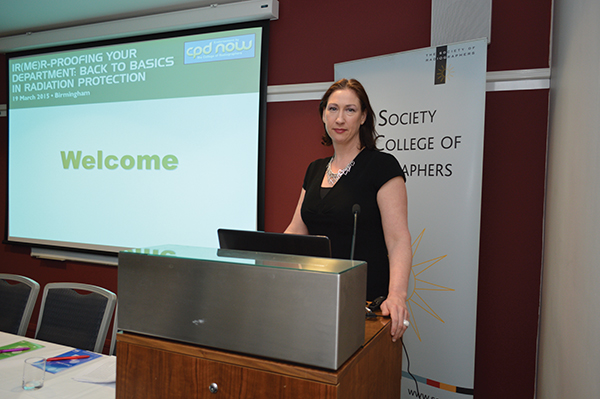Q&A with Rachael Ward, clinical specialist inspector at the CQC.
Q. What’s the purpose of the Care Quality Commission (CQC) and what’s the role of the inspection team?
A. We register, monitor, inspect and rate services. If a service needs to improve, we take action to make sure this happens. We publish regional and national views of the major quality issues in health and adult social care. In addition to comprehensive inspections, the IR(ME)R team is a group of specialists responsible for IR(ME)R enforcement in England.
Q. What powers does CQC have that are relevant to diagnostic and therapeutic radiography?
A. Everybody has the right to receive safe, high-quality care. Under the Health and Social Care Act 2014 (HSCA), if we find that care has fallen short of this, we use our powers to take action against those responsible. The IR(ME)R team has additional powers to enforce the requirements of IR(ME)R under the Health and Safety at Work Act 1974.
Q. How do inspections come about? How do you select departments?
A. We inspect all registered services according to their type. There is a risk-based approach to the inspection programme. All acute trusts have now been inspected. In addition to these, we can also undertake IR(ME)R inspections, which may be unannounced. IR(ME)R inspections may be proactive as part of our inspection programme or reactive in response to a notification.
Q. What do inspections involve? Are they something to be feared?
A. There is nothing to fear! Feedback from departments that have had an IR(ME)R inspection shows that they find them to be a positive experience. An inspection involves a review of documentation and discussions regarding practice with a wide range of staff (not just high level meetings with managers).
Q. How can departments prepare for them? Will you spring any surprises?
A. There’s no need for special preparation if a department has all of the documentation and processes in place to ensure compliance with IR(ME)R. While we may give you some warning that an IR(ME)R inspection is imminent, this won’t be long enough to write an entire set of employer’s procedures, training records and protocols.
Q. What do you look for during inspection?
A. Firstly, we will look to see that all required documentation is in place. We will then speak to staff to see whether practice is actually in line with departmental procedures.
Q. Do you consider the patient viewpoint at all? If so, how?
A. CQC put people who use services at the heart of everything we do. During comprehensive inspections we will speak with people who use the services and those that support them to seek their experiences of care and the service. We’re unlikely to speak with patients during an IR(ME)R inspection.
Q. ISAS is now CQC approved. How are the two connected and why?
A. CQC recognises the potential value of clinical service accreditation and peer review schemes as information sources to support our inspections. Such schemes have the potential to provide useful intelligence and provide independent assurance that accredited services meet standards.
Q. What have you learned from the inspections you’ve carried out so far?
A. We’ve seen that some trusts have developed their own local solutions to problems. This is valuable learning for all, and so we share these in our IR(ME)R annual report.
Q. What does the picture look like when it comes to notified errors?
A. In 2014 (latest published data) 1103 IR(ME)R notifications were made to us. Of these, 900 were for diagnostic radiology, 55 were in nuclear medicine and 148 were for radiotherapy. All common themes and concerns arising from notifications are addressed in our annual reports.
Q. What do departments need to do more, or less, of?
A. We continue to see referral errors for the wrong patient, incorrect patient identification and laterality errors by operators and the absence of training records for locum/agency staff and staff groups, such as interventional radiologists and cardiologists. These are at present our main concerns and areas that we are likely to pay close attention to during an inspection.
Q. Do you have any final messages?
A. It’s really important to read the whole request (and by request we mean either the original request or the scanned copy of it) before imaging your patient. As duty holders under IR(ME)R you must adhere to your employer’s procedures. This being the case it is a good idea to have read and understood them and if you think that they do not reflect practice then you should raise this with your line manager.
Final message – Pause and Check!
Click herefor more information about the CQC.
CQC promises more frequent and focused inspections in new strategy
